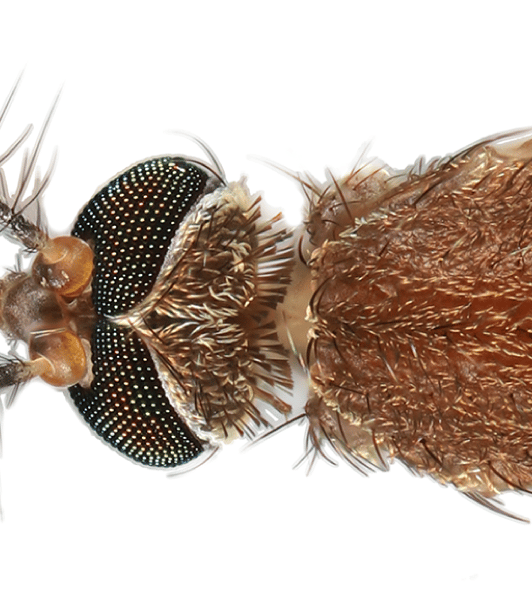Above photo credit Nathan Burkett-Cadena, University of Florida
 Culex pipiens & Culex restuans
Culex pipiens & Culex restuans
Culex pipiens and Culex restuans are common throughout most of North America. Cx. pipiens, also known as the “Northern House Mosquito” arrived in North America from Europe in the 1600s, while Cx. restuans is a native species. Cx. pipiens is almost indistinguishable as an adult from Culex quinquefasciatus, the “Southern House Mosquito” as well as its counterpart Cx. restuans. However, to fully understand their respective roles in disease transmission, it has been noted that more attention should be considered for accurate species identification.
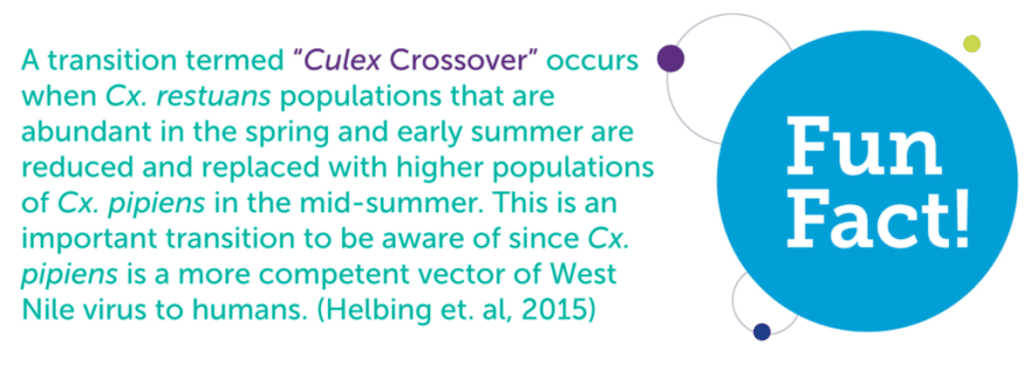
More Fun Facts!
- The common names refer to the behavior of entering homes in search of a blood meal. Cx. pipiens and Cx. restuans are both important vectors of diseases that affect humans and animals.
- Culex pipiens egg rafts exude a substance that is repellent to ants, protecting the eggs from predation. (Hinton 1968)
Where do they live?
Both species prefer to lay eggs in nutrient-rich water. Culex restuans females seek out shaded areas in a variety of habitats including stream pools, ditches, and artificial containers to lay their eggs. Culex pipiens will lay eggs in highly polluted man-made water reservoirs and containers as well as clean water sources and will lay their eggs in the sun or shade. (Walter Reed Biosystematics Unit 2020)
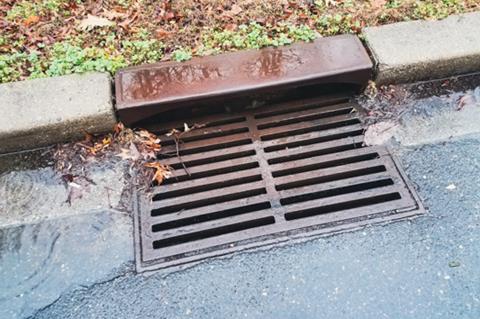

What is the distribution of Culex restuans and Culex pipiens?
Culex pipiens is found throughout the northern United States whereas Cx. quinquefasciatus is found in the southern United States. Hybrids of the two are common where they overlap, and both are in the Pipiens Subgroup that is distributed around the world.

Culex restuans is commonly found in the eastern United States as well as several western states. (Burkett-Cadena 2013)


How do you tell the two species apart?
Both are medium mosquitoes with brown and white coloring. The abdominal segment of Cx. restuans have broad white bands at the base of each segment, and the scutum has two small pale dots, however these two species are often difficult to differentiate as adults and are frequently lumped together even by the most experienced mosquito biologists. Additionally, some studies have found that the misidentifications may over-estimate Cx. pipiens density throughout North America.
Culex pipiens

Culex restuans

Photos: Walter Reed Biosystematics, all rights reserved
Scientific Classification
Kingdom: Animalia
Phylum: Arthropoda
Class: Insecta
Order: Diptera
Family: Culicidae
Genus: Culex
Species: pipiens, restuans
Binomial Name: Culex pipiens, Culex restuans
How can you treat larvae before they become a nuisance or spread disease? Find out here.
Role in Disease Transmission
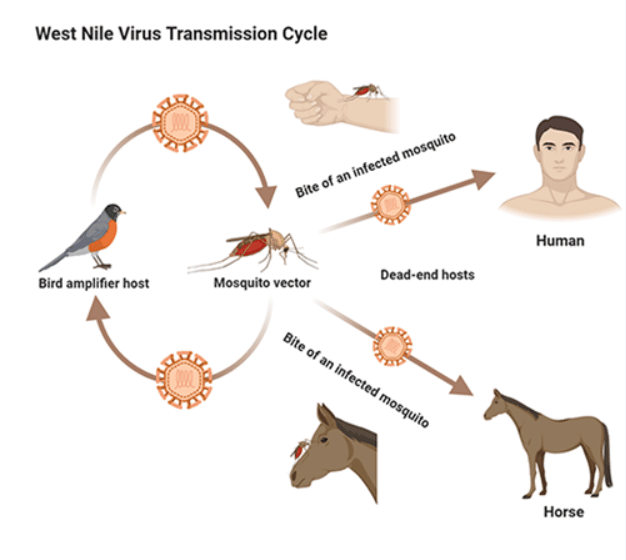 Culex restuans and Culex pipiens feed primarily on birds and will occasionally feed on humans. They can transmit the viruses that cause West Nile virus (WNV) and Eastern equine encephalitis (EEE) in humans. Cx. Pipiens can also transmit St. Louis encephalitis (SLE) virus and can transmit the filarial worm that causes heartworm disease in dogs.
Culex restuans and Culex pipiens feed primarily on birds and will occasionally feed on humans. They can transmit the viruses that cause West Nile virus (WNV) and Eastern equine encephalitis (EEE) in humans. Cx. Pipiens can also transmit St. Louis encephalitis (SLE) virus and can transmit the filarial worm that causes heartworm disease in dogs.
How do you monitor and control Culex pipiens and Culex restuans?
Mosquito surveillance includes monitoring population dynamics and disease prevalence. Mosquito control districts monitor these things to better understand what types of mosquitoes are present, how many, and if they are infected with arboviruses.
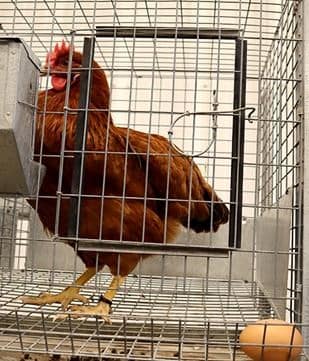 To conduct surveillance on Culex populations, mosquito control districts can utilize light traps, landing rate counts, and larval dipping to find and monitor places where mosquitoes lay eggs. They can also use sentinel chickens to keep track of disease transmission in birds that could spill over to humans.
To conduct surveillance on Culex populations, mosquito control districts can utilize light traps, landing rate counts, and larval dipping to find and monitor places where mosquitoes lay eggs. They can also use sentinel chickens to keep track of disease transmission in birds that could spill over to humans.
This allows for tracking of mosquito populations and the viruses they may be spreading. All this data gathered allows mosquito control districts to make informed management decisions to prevent mosquitoes from becoming a nuisance and/or from spreading disease.
Learn more about larvicide resistance and what you can do to prevent it!
Have Questions? We’re here to help!
 Azelis A&ES has technical experts that can help you select the right solution to control problem vectors in your region. We are ready to share our knowledge and experience with you!
Azelis A&ES has technical experts that can help you select the right solution to control problem vectors in your region. We are ready to share our knowledge and experience with you!
Talk to one of our technical experts to get started today!
